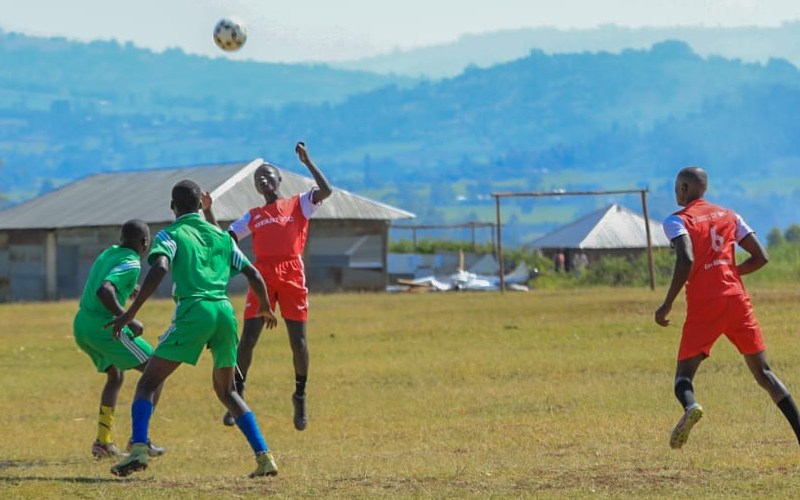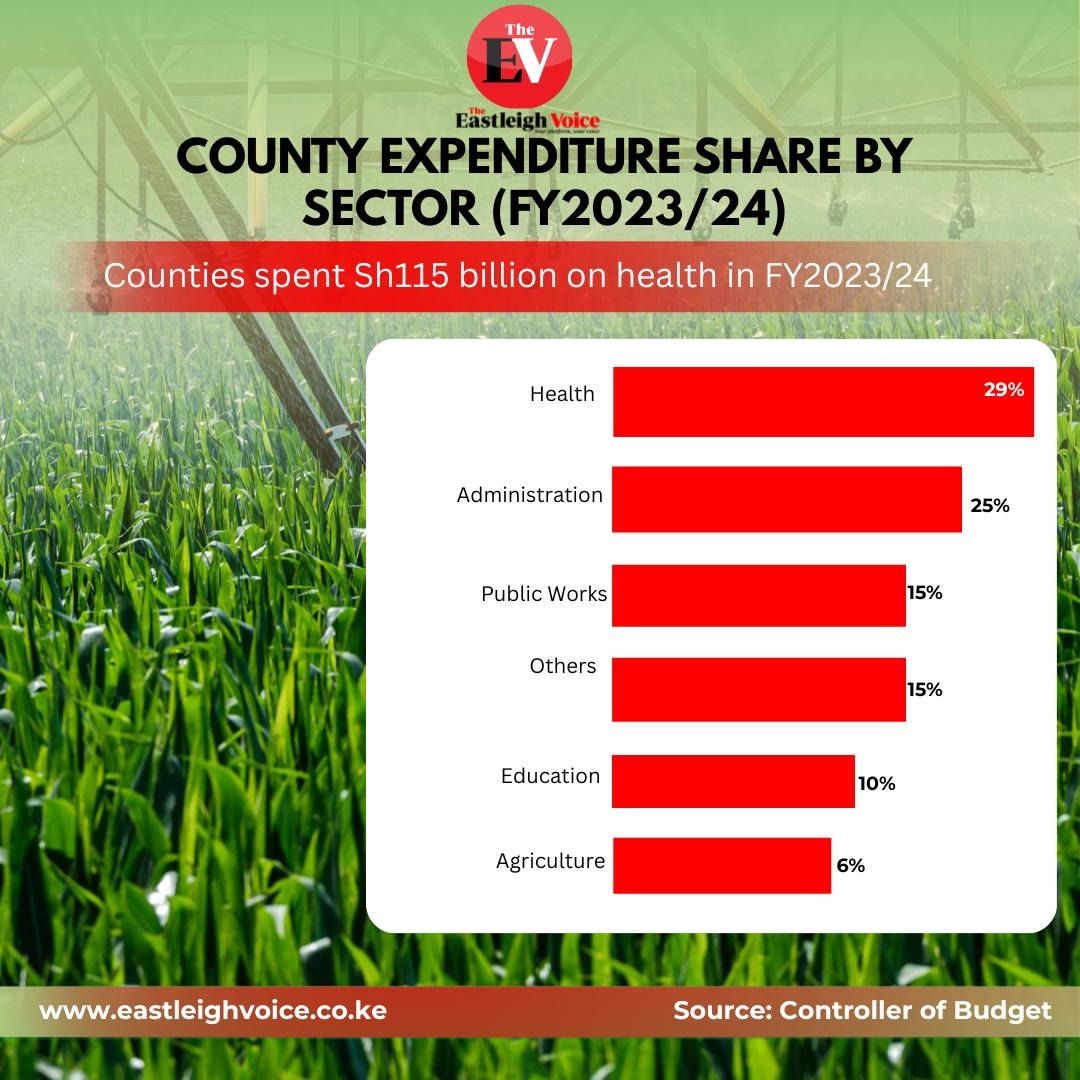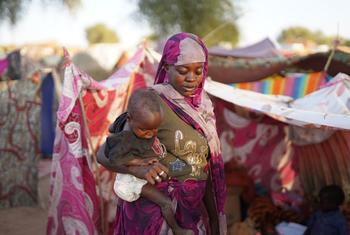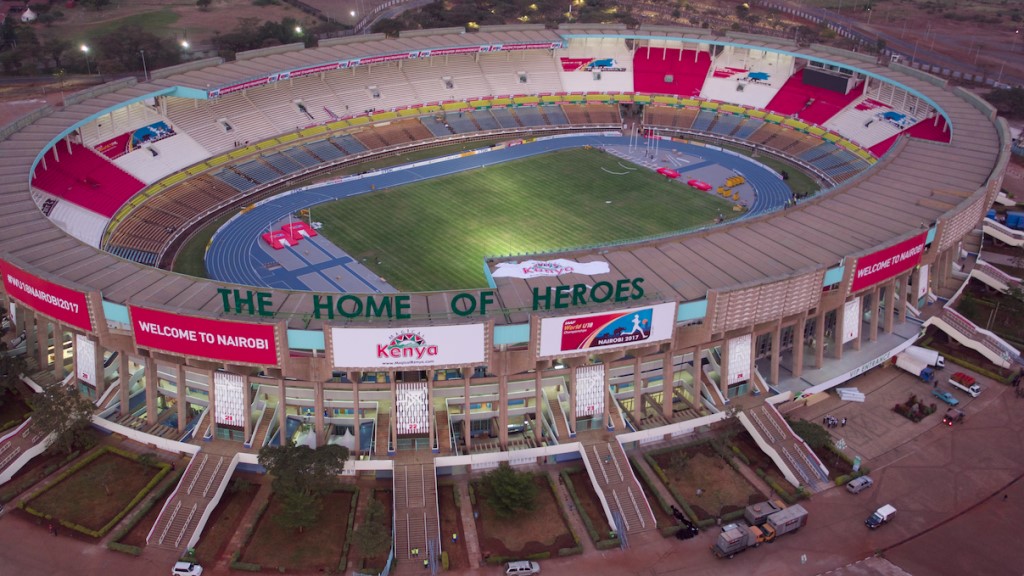Nairobi among worst-performing counties in health, trade sectors

The performance of county governments in healthcare was assessed based on their efforts to provide affordable medical treatment, ensure health facilities were well-equipped with personnel, medical supplies, and equipment, and address residents’ health concerns effectively.
Nairobi has lagged in service delivery, ranking among the worst-performing counties, with key sectors such as Health, Agriculture, and Trade recording some of the lowest scores, according to the latest Infotrak CountyTrak Performance Index 2024.
The county registered low ratings across various sectors, including Agriculture (33 per cent), Health (36 per cent), Trade and Tourism (37 per cent), Culture and Sports (39 per cent), Planning (39 per cent), Water Management (41 per cent), Housing (40 per cent), Education (43 per cent), Environment and Social Services (43 per cent), and Roads (44 per cent).
More To Read
- City Hall opens six-month window to regularise non-compliant properties
- Tear gas, running battles rock Kariobangi North as rival groups clash during Gachagua church visit
- Governor Sakaja unveils six-borough structure to enhance service delivery
- High-rise living in Nairobi’s Pipeline estate is stressful: How men and women cope
- Why City Hall moved hospital accounts to Sidian Bank- Sakaja
- City residents say Nairobi's illegal billboard cleanup favours some areas over others
The survey asked respondents to rate their counties’ performance across various sectors on a scale of 1 to 10, where 1 represented extremely poor performance and 10 indicated excellence.
The performance of county governments in healthcare was assessed based on their efforts to provide affordable medical treatment, ensure health facilities were well-equipped with personnel, medical supplies, and equipment, and address residents’ health concerns effectively.
Other key evaluation criteria included access to public health information, disease prevention measures, and the availability of adequate sanitation facilities such as pit latrines and public toilets.
The survey was conducted between October and December 2024 across all 47 counties, with a sample size of 39,795 respondents. Data collection was carried out through Computer-Assisted Telephone Interviews (CATI) and analysed using SPSS.
The questionnaire applied a 1–10 Likert scale for each indicator, with the mean score for each sub-indicator within the Key Performance Indicators (KPIs) used to determine the final index for each KPI. The overall county performance index was then computed as an average of the KPIs.
The report indicates that county services deteriorated in 2024 compared to previous years, with performance dropping across key sectors. While some counties focused on immediate service delivery, others prioritised planning and groundwork, delaying tangible benefits for residents.
Kenyans overwhelmingly supported the 2010 Constitution, hoping that devolution would enhance access to resources and political power at the grassroots level. However, counties continue to face challenges in meeting these expectations.
“While most county governments appreciate this reality and work to deliver quick results, others prioritise extensive planning in their early stages. Regardless of different leadership styles, the critical factor is ensuring that people feel the impact of devolution in their daily lives. County governments must understand public perceptions and align their strategies accordingly,” reads the report.
The CountyTrak tool assessed counties based on twelve core functions and thirty-three key performance indicators, alongside five approval rating questions.
The evaluated sectors included Agriculture, Health, Education, Roads and Transport, Energy, Water Management, Environment and Natural Resources, Trade and Tourism, County Planning and Development, Housing, Lands and Settlement, Culture and Sports, and Social Services. Additionally, Public Participation, Planning, and County Resource Management were considered.
The report highlights a general decline in service delivery across counties compared to 2023. Education, the best-performing sector, dropped to 46 per cent in 2024, down from 55 per cent in 2023, 52 per cent in 2020, and 58 per cent in 2015.
Environment and Natural Resources recorded 46 per cent, down from 50 per cent in the previous year, while Energy declined to 44 per cent from 49 per cent in 2023.
Other sectors, including Agriculture, Culture and Sports, Social Services, Roads and Transport, Health, County Planning and Development, Trade and Tourism, and Housing, Lands and Settlement, recorded scores ranging between 42 per cent and 43 per cent, all reflecting a decline from their 2023 ratings.
Despite the overall drop, some counties excelled in specific sectors. Murang’a and Trans Nzoia led in Agriculture with 51 per cent, followed by Elgeyo Marakwet and Homa Bay at 50 per cent.
Homa Bay topped Health at 53 per cent, with Murang’a close behind at 52 per cent. Murang’a also ranked highest in Education at 54 per cent, followed by Homa Bay at 53 per cent and Trans Nzoia at 51 per cent.
Homa Bay led in Roads and Transport at 52 per cent, followed by Murang’a at 51 per cent. In Energy, Murang’a ranked first at 53 per cent, while Nyeri followed at 50 per cent. Trade and Tourism saw Murang’a and Homa Bay tying at the top with 51 per cent each.
Murang’a also led in Housing, Lands, and Settlement with 50 per cent and topped in Water Management with 53 per cent, followed by Homa Bay at 51 per cent.
Trans Nzoia ranked highest in Environment at 54 per cent, with Murang’a close behind at 53 per cent. In Culture and Sports, Homa Bay led with 53 per cent, while Murang’a followed at 51 per cent. Murang’a and Homa Bay tied in Social Services at 52 per cent and in County Planning and Development at 51 per cent.
Regionally, Central and Nyanza counties performed best, each scoring 46 per cent. Western and Coast regions followed with 44 per cent, Rift Valley recorded 42 per cent, Eastern stood at 40 per cent, Nairobi registered 39 per cent, while North Eastern had the lowest performance at 38 per cent.
Top Stories Today










































